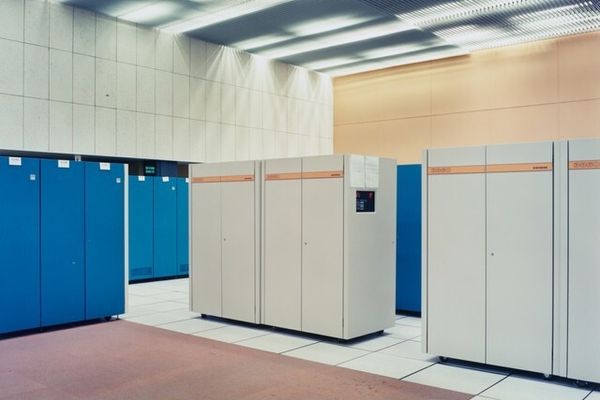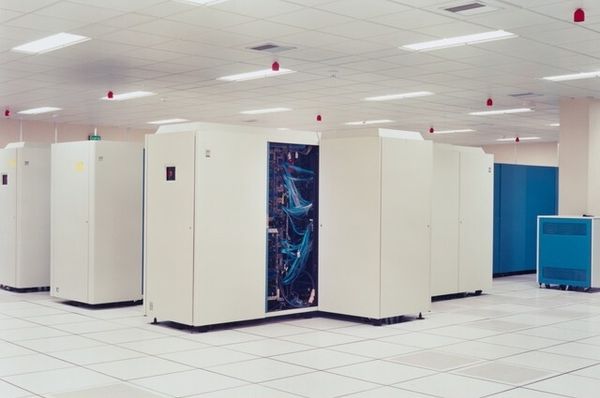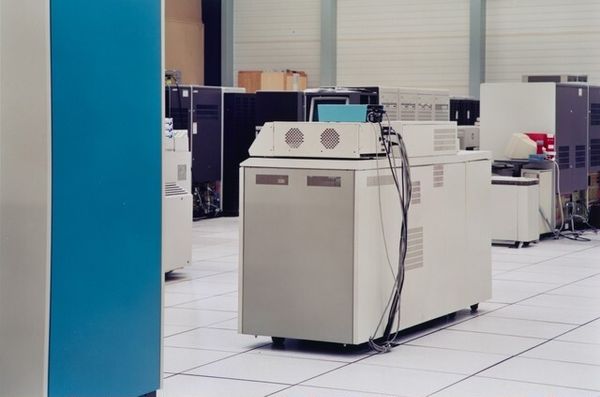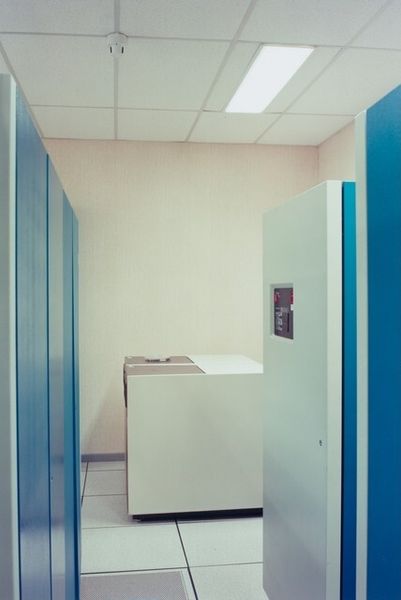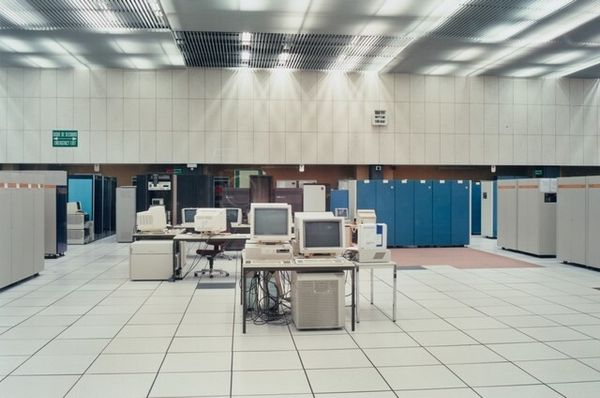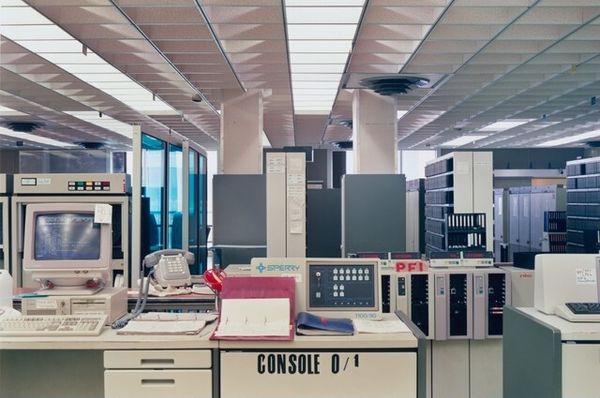
Centre Européen pour la Recherche Nucléaire, Geneva, Switzerland Possibly 1989 - 2006
0:00
0:00
photography
#
conceptual-art
#
photography
#
geometric
#
cityscape
#
modernism
Dimensions: image: 17.7 × 26.4 cm (6 15/16 × 10 3/8 in.) sheet: 28.1 × 35.3 cm (11 1/16 × 13 7/8 in.)
Copyright: National Gallery of Art: CC0 1.0
Curator: Let's consider this intriguing photograph by Lewis Baltz, titled "Centre Européen pour la Recherche Nucléaire, Geneva, Switzerland." It’s dated sometime between 1989 and 2006, capturing a utilitarian space within the famed CERN facility. Editor: Wow. My first thought? Cold. Clinical. Makes you feel small, like an insignificant speck. The severe geometry, the echoing lines...it's almost unsettling in its banality. It also looks strangely antiquated for a photograph depicting supposedly cutting-edge research. Curator: That’s precisely Baltz’s genius, isn't it? He photographs the infrastructures of power, the spaces where science and technology play out, often stripping away any sense of romanticism. This isn’t about celebrating scientific advancement; it’s about examining the visual language of these institutions. Think of Foucault and the architecture of control. Editor: Absolutely. The absence of people is key. It emphasizes the inhuman scale of the machinery, and creates an ominous atmosphere. There's a suggestion of concealed technological control. The subtle colour palette makes this even more evocative and subdued. I’m picturing hushed conversations, the low hum of massive servers… or the prelude to some kind of cinematic meltdown. Curator: And that's where it gains traction: Baltz compels the audience to think about who benefits from all this activity and at what price. He subtly critiques the social and political implications of science and its relentless march forward. In its own understated way, it speaks volumes. Editor: I agree. These machines promise progress and innovation. And this clinical image subtly undermines those aspirations; it's less a monument to progress and more a kind of…question mark. Thanks to Baltz's image of cold utility. Curator: His clinical approach highlights a critical tension in modern society: that while knowledge expands and technologies advance, power imbalances may also amplify and even deepen, not shrink, leaving us to wonder whether the costs are in alignment with progress. Editor: It gives us a glimpse into spaces and considerations we do not see every day. Curator: Precisely, a thought-provoking look, wouldn't you agree? Editor: Without a doubt! It definitely inspires more thoughts about modern spaces.
Comments
No comments
Be the first to comment and join the conversation on the ultimate creative platform.


